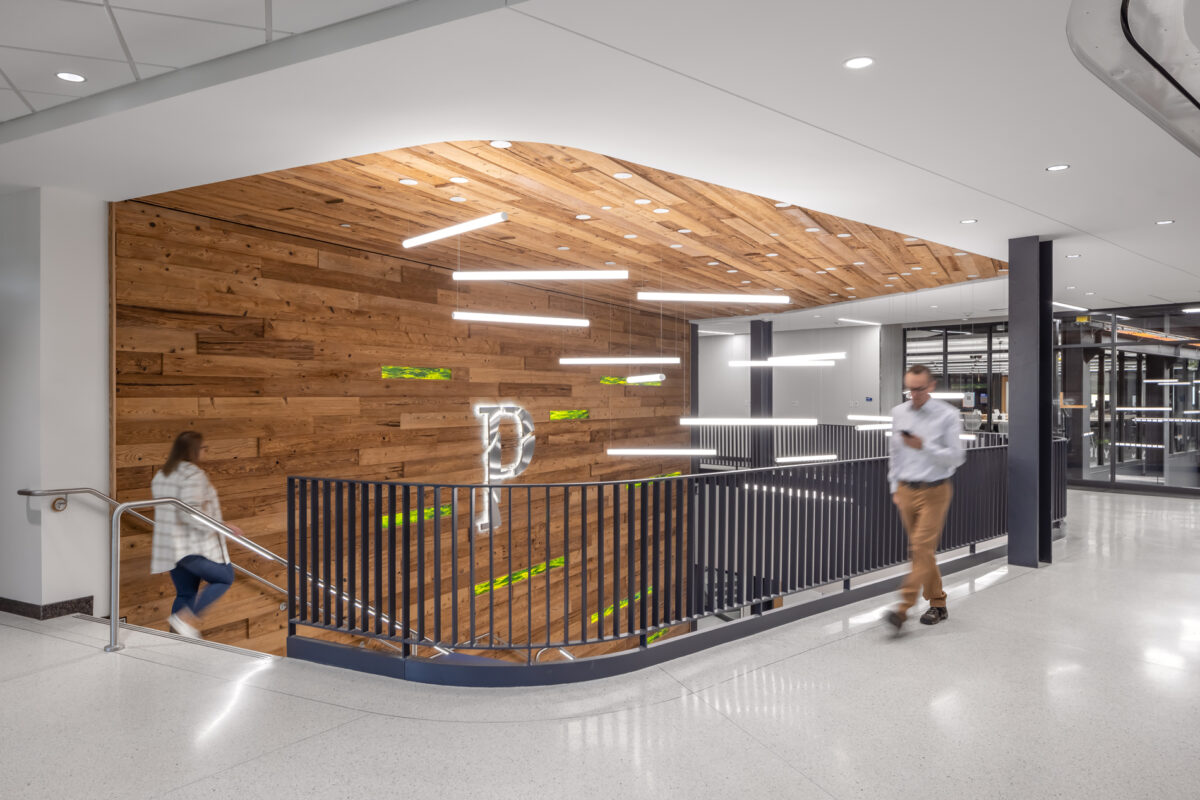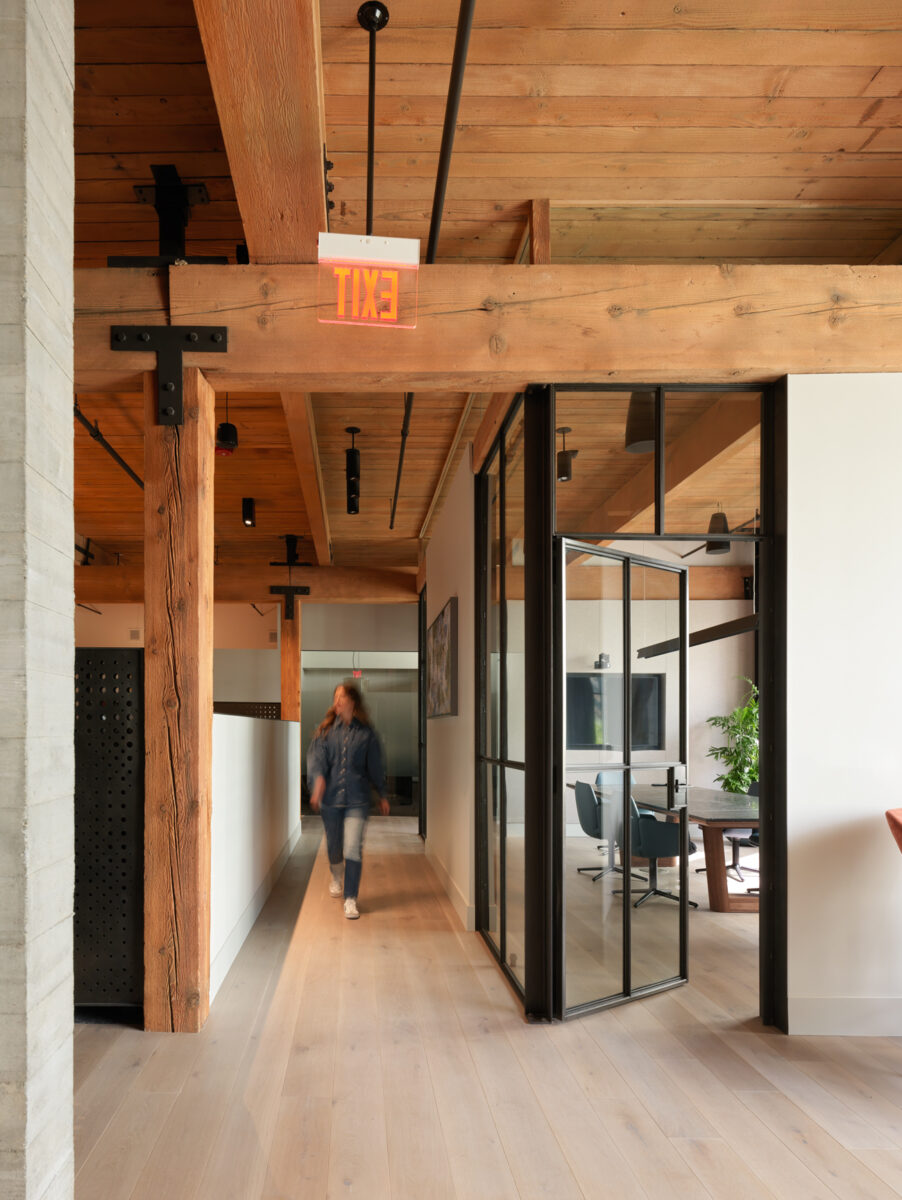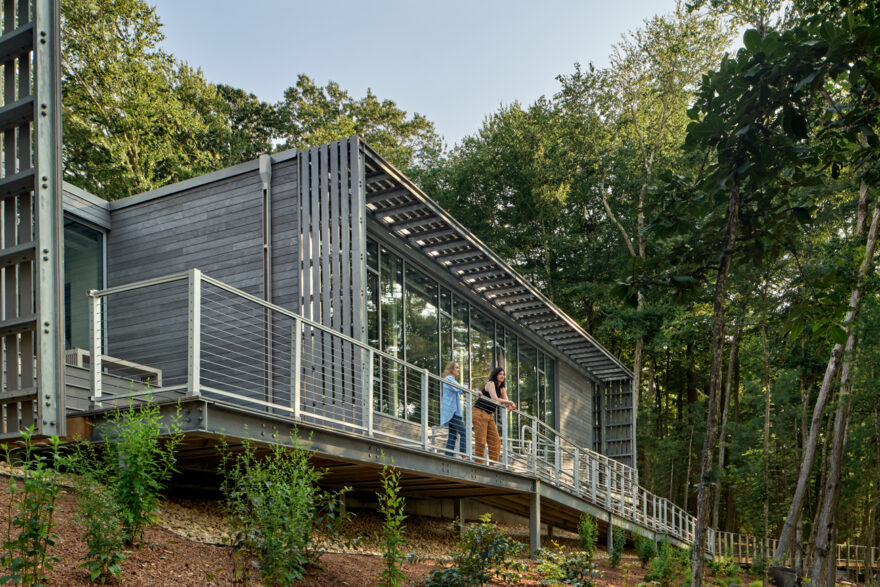In light of climate change, there is a pressing need for everyone around the world to shoulder the responsibility to implement changes across various aspects of our lives, spanning from food consumption and transportation to energy systems and even our approach to construction. The demand for essential infrastructure continues to surge at record rates. To meet economic needs without jeopardizing the environment, the solution lies in using natural materials.
Wood, as one of our most traditional and natural construction materials, plays a pivotal role in both balancing and removing greenhouse gasses from the environment. Since their inception, trees have been integral to the ongoing process of removing greenhouse gasses by absorbing carbon from the atmosphere. This carbon is stored within their structure throughout their lifecycle, even after they are harvested and transformed into building materials, thereby continuing to contribute to carbon retention and storage.
By leveraging wood’s natural properties, timber is less carbon-intensive to manufacture compared to cement and steel. According to ARUP’s report, Rethinking Timber Building, cement production accounted for approximately 8% of global carbon dioxide emissions, while the iron and steel industry accounted for 6-7%. With the significant carbon footprint associated with cement and steel production, timber emerges as an increasingly compelling alternative.
Timber stands out as a renewable resource with ideal characteristics for construction materials. Beyond its role as a carbon sink, its tensile and compressive strength fortify building structures with enduring durability. The cellular structure of wood, consisting of strong fibers and a matrix of lignin, provides natural strength and flexibility. This composition allows the wood to bear significant loads and resist deformation.

Though exterior applications like cladding may render wood vulnerable in certain environments, ongoing investments and advancements in preservation techniques, including thermal and chemical modifications, have bolstered its reliability as a sustainable building material over the years. Given the paramount importance of employing safe and dependable building materials for commercial projects, there remains a steadfast commitment to this cause. Simultaneously, the burgeoning emphasis on the health and comfort of occupants continues to garner increasing attention and significance in the construction industry.
When considering indoor health and comfort, the availability of natural materials is known to reduce occupant stress levels and heightened positive responses. Natural materials such as wood play a pivotal role in fostering biophilic design within commercial projects, integrating natural elements seamlessly into the built environment. A biophilic design approach in interior space enhances cognitive function and elevates mood and productivity for occupants. The warmth and organic qualities of wood create a welcoming and comfortable atmosphere, evoking human’s natural sense of connection to nature.
In addition to psychological well-being and comfort, natural materials help maintain better indoor air quality. Certain synthetic materials may release volatile organic compounds (VOCs) into the air. VOCs are chemicals that can evaporate into the air, contributing to indoor air pollution and potential health hazards. Opting for wood in construction and furnishing choices enhances the ambiance and aesthetic appeal of spaces and supports a healthier indoor environment by minimizing the emission of harmful chemicals. Incorporating wood into a biophilic design can fulfill green building certification criteria due to its inherent environmental benefits.

Wood is renowned for its durability as a building material, often enduring for over a century when properly maintained. Nevertheless, as with all materials, there comes a point when wood reaches its end-of-life. When this moment arrives, the options for its disposal extend far beyond mere waste. The common options typically encompass disassembly, adaptation, and reuse, ensuring the longevity of wood as a building material while minimizing its environmental footprint and contributing to a more sustainable future. Through thoughtful practices, wood can continue to contribute to sustainable construction and design, embodying the principles of environmental stewardship and resource efficiency.
Wood isn’t just a conventional building material; it plays a vital role in advancing sustainability in construction. Wood stands as one of the most organic building materials, exhibiting reduced carbon intensity in manufacturing when compared to synthetic alternatives. Its inherent characteristics, including carbon sequestration throughout its lifecycle, remarkable durability, and renewable nature, wood emerges as a key player in environmentally friendly building practices. As we navigate the future of construction, prioritizing wood in commercial projects will continuously make positive impacts on our environment.
reSAWN TIMBER co.’s Sylva™ thermally modified product line presents domestically sourced and manufactured wood cladding suitable for both interior and exterior applications, providing environmentally friendly options with a minimal carbon footprint. Thermally modified wood further enhances the wood’s structure, transforming the wood into a material with improved durability, stability, and aesthetic qualities. Selecting a product that is both locally sourced and modified reflects a commitment to mitigating climate change and endorsing sustainable design for future buildings.

